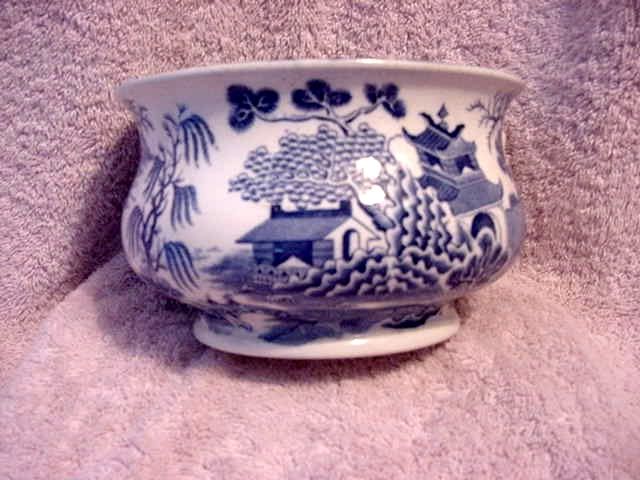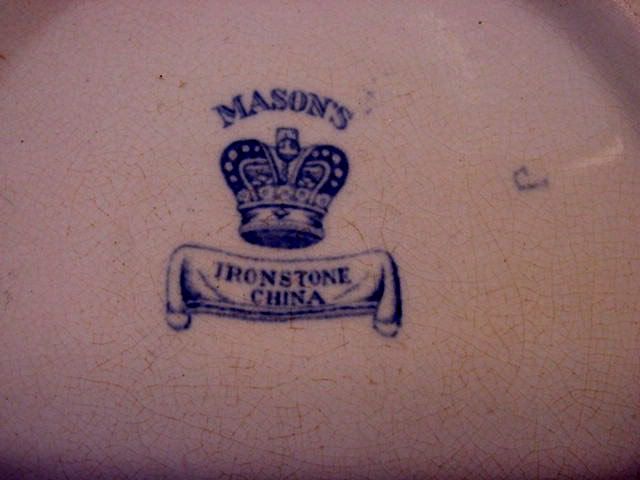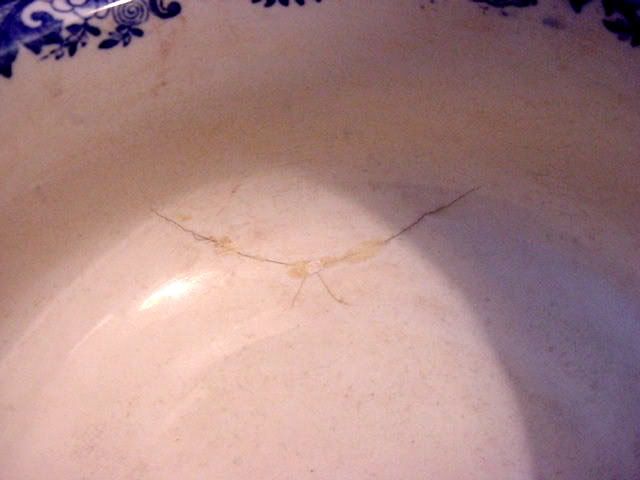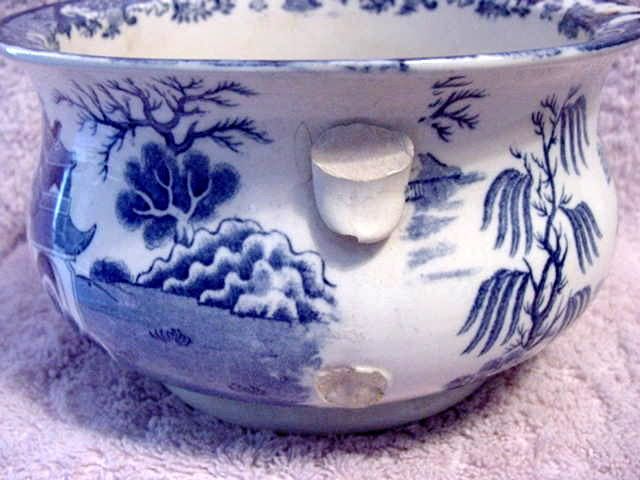
This is a perfect example of "One mans trash is another mans treasure". When I first saw this piece laying on the ground in a pile of junk at the swap meet, my immediate reaction was to just walk away. It was dirty and cracked and the handle was broken off but the "Bottom mark checker" syndrome kicked in and I picked it up to look. Seeing the Mason's Ironstone mark, I decided to look a little further and noticed that it used to have a handle that was broken off and missing. This was my first clue that it was not a planter as I had originally thought but a chamber pot. Then I noticed something else about it that was different. It was obviously a blue willow design but there were only two figures on the bridge instead of three. That was something I had never seen before and I knew that I wanted to study it further if the price was right. It was in such bad shape that the seller was glad to get rid of it so I paid his price and took it home with me.
What I already knew was that the Mason's were a family of potters trading under various styles at Lane Delph and Fenton (Staffordshire) from c.1800 to c.1854. Charles James Mason patented the famous 'PATENT IRONSTONE CHINA' in 1813. The Mason patterns, molds, etc., passed through several firms to Messrs. G L Ashworth & Bros in 1861. This firm was renamed 'Mason's Ironstone China Ltd' in 1968.
From my research it appears to be circa 1840's and if it were in good condition probably retails at around $300-$400. Apparently the Two Man Willow was a common variation back than and the story of two young lovers being chased across the bridge by the girls irate father had not yet become widespread.
Another fact that surfaced from my efforts to get information about this piece was that the Willow pattern actually originated in England in the late 1700's and was than copied in other countries including Japan. I may be the last to find out about this as I always assumed it that it was first used in the Orient and spread throughout the world from there.
I guess the point that I am trying to make here is that sometimes something that appears worthless can yield a great deal of valuable information. Since my limited finances make me more a collector of information than actual pottery I don't pass by damaged pieces without at least considering the fact that they may have secrets to unlock and should not be tossed in the trash so quickly.
Here are some other images that better show the damaged areas:





Quite frankly I don't know if I will ever list this pot for sale, but it has already deposited a large sum in my knowledge bank.

2 comments:
I have almost exactly the same pot. Mine looks a little larger and has geometric edges. The handle is a dragon serpent type fella. All the same markings, and it's flawless. How would I go about selling it? Thank you for your informative blog. I just pulled it out of the pantry tonight and decided I would find out a little more about it.
Thanks for your comment. My damaged pot is 6 7/8" rim diameter x 4 5/8" foot ring x 4 1/8" high. I'm afraid that all of the information I have at this time is already in the blog. If I come across anything else I will let you know. If you can please email me some pictures of your pot.
Post a Comment